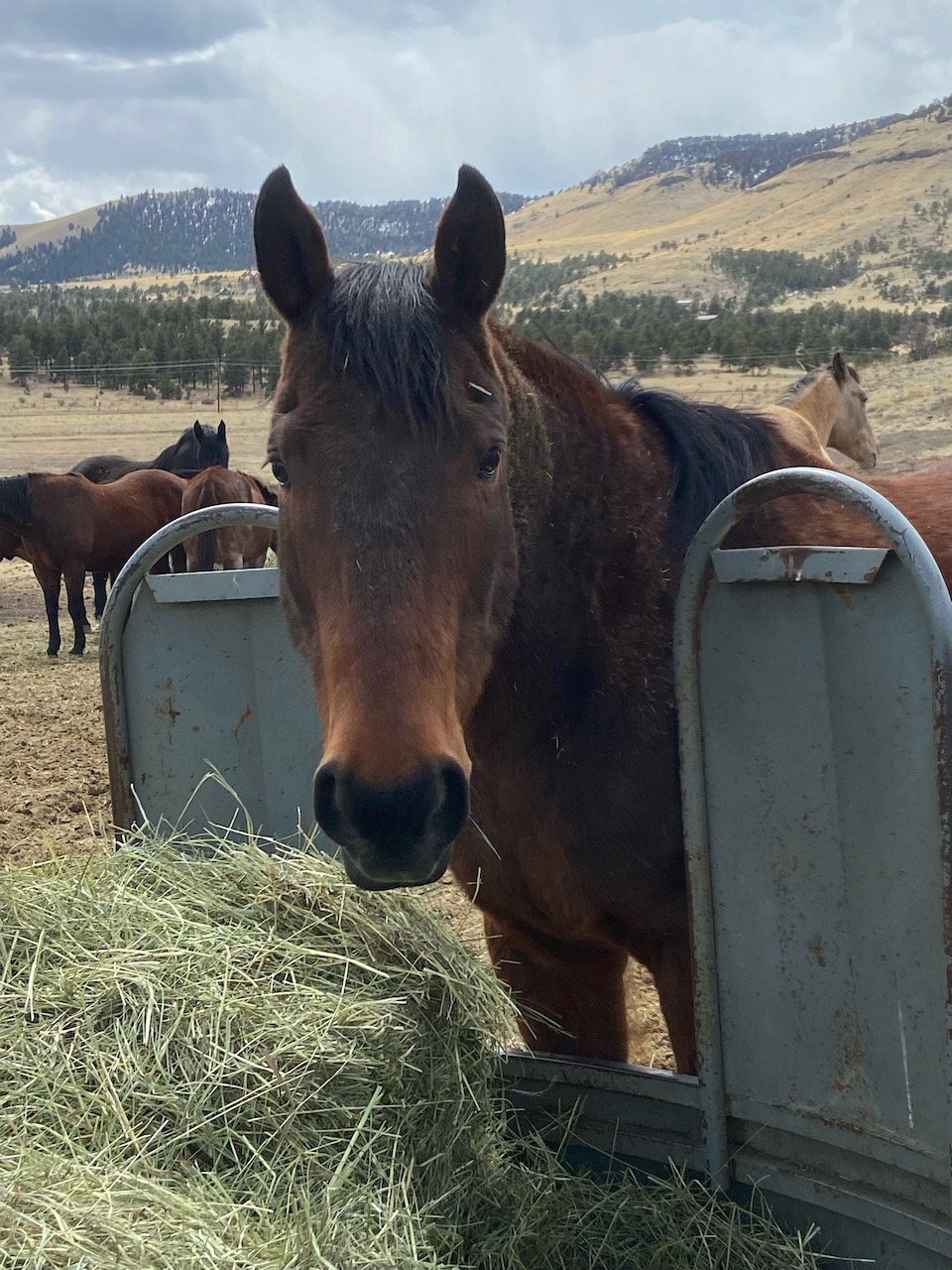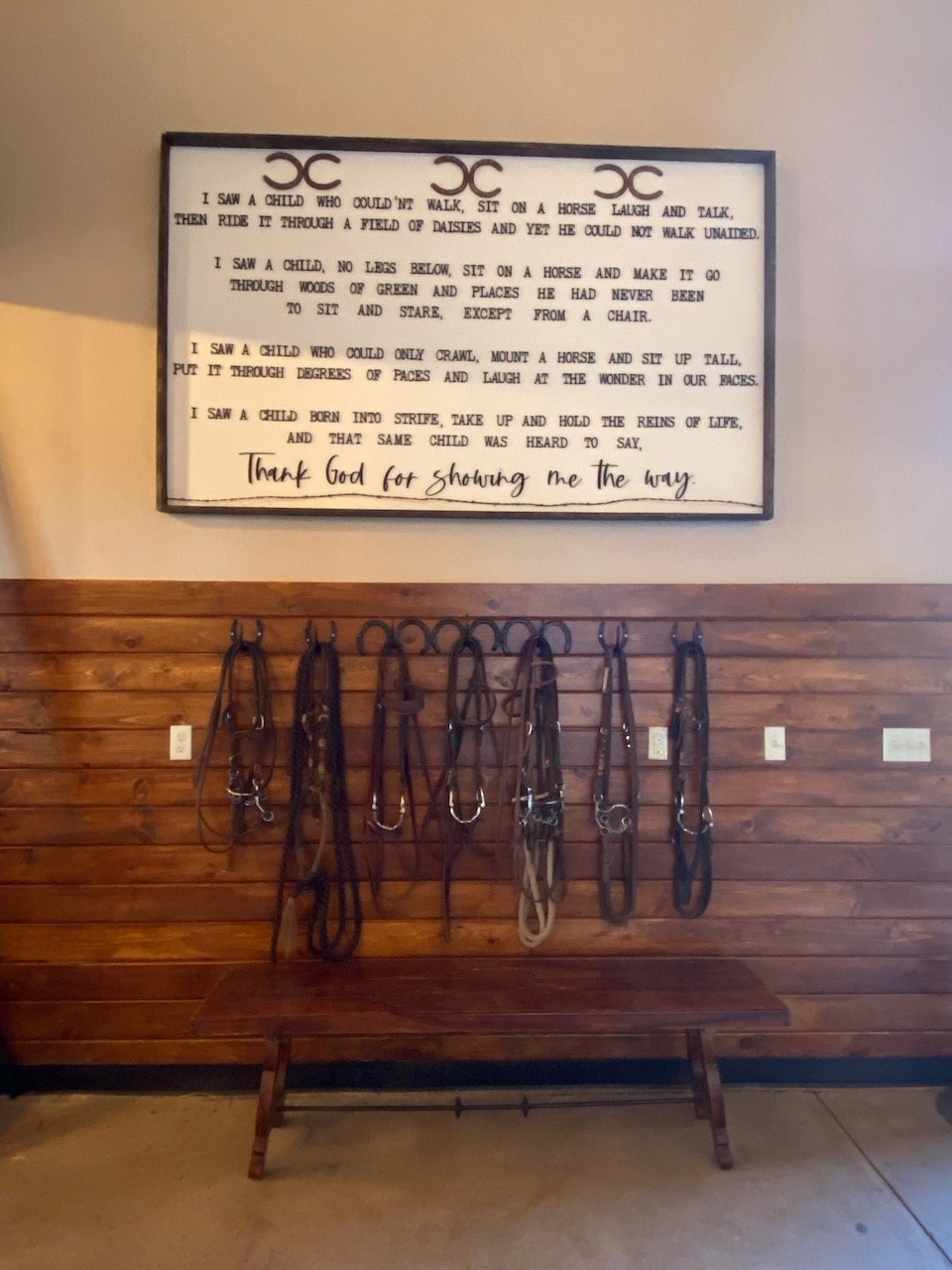
BUCKETS OF SUPPORT
The healing power of horses has long withstood the test of time. Physiologic benefits including decreased blood pressure and lowered heart rate complement the mental health benefits of reducing anxiety and combatting depression. Inherently incapable of “telling” a lie, the horse creates a unique healing experience by offering a safe space to process complex emotions.
We are committed to providing exceptional care for all our animals engaged in helping humans heal. It is entirely through your generous and caring donations that we are able to do so. Each and every thoughtful contribution directly supports our animals’ ability to live out our mission of Restoring what is broken and Empowering what remains.

HAY
FUN FACTS ABOUT HAY
fEED
FUN FACTS ABOUT FEED
Our herd is a composite of many different horses, each with slightly different nutritional needs. We assess each horse based on its age, body conformation, medical conditions & dentition to determine which feed they will get each morning.
Here’s our every 2-week shopping list for feed:
$145: 6 bags Hubbard Rolled Oats
$200: 5 bags Triple Crown Senior
$100: 4 bags Standlee Timothy Pellets
$25: 1 bag of Purina Pig feed
$20: 1 bag of Hubbard All Stock (goat) feed
Our feed bill is about $12,000 per year
Farriers
FUN FACTS ABOUT FARRIER CARE
Horses typically will need their feet trimmed every 6 to 12 weeks depending on time of year, work load, condition of feet, and if corrective shoeing is needed.
Horse hoof growth is dependent on many factors including (but not limited to): age, exercise/movement, nutrition, environment, and genetics.
Horses’ feet are tremendously important to pay attention to because as the saying goes: No hoof, No horse!
$75: Horse trim
$140: Draft horse trim
$200: Corrective front shoes for Rudy
$225: Corrective front shoes for Rev
$120: Saddle horse front shoes (summer/fall)
$250: 1 month supply of Farriers Formula Hoof Supplement for the drafts
Farrier care averages about $16,000 per year
Vet care
FUN FACTS ABOUT VET CARE
All of our animals see the vet twice a year for check ups and routine vaccines & dewormer. This is an important program to maintain, especially as the animals age. We are blessed to work with a team of veterinarians who are committed to providing consistent scheduled care and prompt emergency care.
$2000: Spring vaccines/dewormer for horses & goats:
$2000: Fall vaccines/dewormer for horses & goats:
$210: Horses typically need an annual dental exam/float
$310: 1 bottle of Equioxx (for arthritis); 10 bottles per year
$385: 1 box Prascend (for PPID/Cushings); 3 boxes per year
Scheduled care averages about $12,000 per year
training
FUN FACTS ABOUT TRAINING
Humans are training horses (for better or for worse) with every interaction.
We strive to make training a positive experience for all our animals.
Simply giving the animals a predictable feeding program in the mornings decreases their stress, and it gives us a perfect opportunity to get a good look at each animal individually to note any changes that might occur.
Spreading hay among separate feeders teaches horses (& cows) that there is adequate grazing space for everyone. This decreases the risk of injury out in pasture as there is no resource competition.
Teaching horses to share space with humans and carry them as riders gives them a sense of purpose. It often builds their confidence and helps them navigate unfamiliar circumstances as well.
Teaching horses to stand politely for the farrier is always time well spent. Our draft horses in particular struggle with this;) However, through time and patience, all horses have the potential to learn this skill (& your farrier will thank you!:)
Horses need between 10-30 lbs. of hay per day depending on their size and time of year (i.e. pasture grazing as source of forage during summer/fall months).
To feed our herd (including the cows) during the winter months into spring, they collectively require about 200,000 lbs. of hay!!! That’s a lot of hay!
We feed large 3x4 bales well spread out in feeders, so ALL our animals have equal access to hay when they are grazing. We receive semi trailer loads of these bales, 36 at a time, and feed them out directed by the animals’ feeding patterns.
$5600: 1 semi load of 36 large bales of hay
$28,000: The 5 loads it takes to get us through Winter and into Spring.






